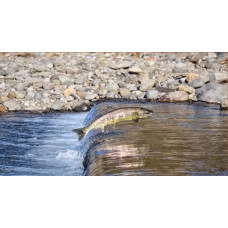Neritic fishes - marine fishes inhabiting coastal sea waters up to 200 m depth, mainly above the shelf (gobies, flounders, some sharks, rays, eels).
The neritic area is the water column overlying the mainland shoal. The population is quantitatively and qualitatively richer than in the oceanic area: it is represented by crustaceans, rotifers, mollusks, insect larvae, and intensively developing vegetation.
Coastal fishes, also called neritic fishes, live in the sea between the shoreline and the edge of the continental shelf. Since the continental shelf is usually less than 200 meters (660 feet) deep, it follows that pelagic coastal fishes are generally epipelagic fishes, living in the sun-drenched epipelagic zone. Coastal fishes can be contrasted with oceanic fishes or marine fishes that live in deep water off continental shelves.
Coastal fish are the most common fish in the world. They can be found in tide pools, fjords and estuaries, near sandy shores and rocky coastlines, around coral reefs and on or above the continental shelf. Coastal fish include forage fish and the predatory fish that feed on them. Forage fish thrive in coastal waters where high productivity is due to upwelling and shoreline nutrient depletion. Some are partial residents and spawn in streams, estuaries, and bays, but most complete their life cycle in the zone.
Neritic fish
Tags: neritic fish

